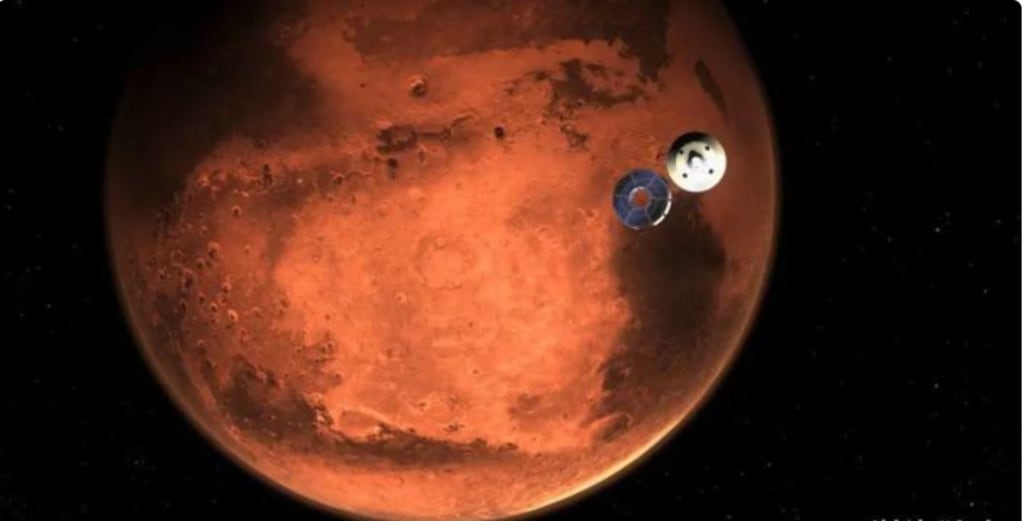
It is known that Mars itself has an atmosphere, and although the atmosphere of Mars is carbon dioxide and is quite thin compared to the atmosphere of Earth, as long as there is an atmosphere on the planet, there will be a serious weakening of interplanetary radio communication. Moreover, the rotation of Mars is not synchronized with that of the Earth. So once any probe lands on the surface of Mars, communication between it and the Earth headquarters becomes a major problem.
This is also very different from the communication link between deep space probes like Voyager after they fly into the edge of the solar system. For the deep space probe, whether it has flown billionaires or billion milometers away from the Earth, as long as there is no blocking object between itself and the Earth, then its radio communication is still relatively smooth, although it may take a few days to receive a signal from its transmission to the Earth. And it may also take a few days for the Earth to reply to its commands. But the distance does not affect the reception and transmission of signals. And the deep space probe with that
The radio transmission between the Earth, only a few watts to a dozen watts of radio transmission power is required. That is, even if these probes fly out of the edge of the solar system, there is no longer enough sunlight to drive the photovoltaic panels, but by the isotope batteries carried on them is not much electrical power, but still can maintain about 50 years of regular radio signal contact with the Earth, but also for some of the instruments on the probe, continue to work and detection for some time. For example, detecting different radiation and particle environments inside and outside the edge of the solar system. It is not until the isotope batteries reach their end of life that these long-lived probes flying out of the solar system will finally lose contact with the Earth headquarters.
The surface of Mars, however, can still harness the energy of sunlight. However, the signal transmission transmitting power of the probes operating on the surface of Mars is also not very large, at most only a few tens of watts. Trying to transmit data directly to the direction of Earth with such high power is unable to achieve the same transmission effect as the aforementioned deep space probes in flight.
With a dozen watts of radio transmission power, the signal basically can not penetrate the Martian atmosphere directly to Earth. And on the surface of Mars also can not always point the transmitting antenna in the direction of the Earth. In this way, for the long-term operation of the probe on the surface of Mars, it is necessary to continue to orbit around the Mars orbiter as a signal transmission "relay satellite", to achieve two-way signal contact between Earth. For a long time, only the superpowers have operated multiple surface rovers on the surface of Mars. Therefore, it also has the largest number of relay probes in orbit around Mars. Four more are currently operational, along with the European Mars Express orbiter.
These five airborne Mars satellites, all of which can provide long-term signal relay for the superpowers' multiple probes operating on the surface of Mars, basically use the UHF band, i.e., a temporary link from 390 to 450 MHz and a low-gain quasi-unidirectional antenna. Hays Wolf Mountain (Huns Wolf Mountain) to say: even then, these as many as five U.S. and European Mars artificial satellites can only ensure that there is a window of about 10 minutes per day to transmit data between them and the rovers on the surface of Mars.
This is because the current total of five U.S. and European Mars satellites are not in synchronous orbit of Mars, and these five are not professional communications satellites. Therefore, the time for any one of them to fly over the head of the Mars surface probe and form a temporary communication link is very limited, basically only two or three minutes. The result is that the five combined only have 10 minutes of communication time per day. And Zhou Ron currently only Gentian orbiter and the European orbiter can establish communication relays, only a few days only once to transmit data is not surprising.
If more Mars probes are launched in the future, it is necessary to establish a Mars synchronous orbit relay satellite constellation in advance. Just like the sky chain satellites, 3 of them can cover 90% of the surface of Mars with high capacity signal relay service. Mars, because it is smaller than Earth, also has a lower synchronous orbit than Earth, roughly at an altitude of 17,000 km above the Martian equator.
About the Creator
Stajila
The progress of scientific research and its increasingly expanding fields will arouse our hope。






Comments
There are no comments for this story
Be the first to respond and start the conversation.